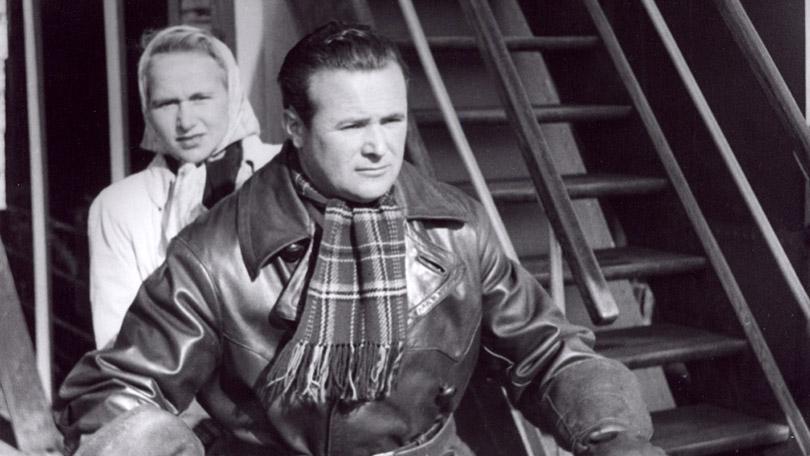Ib Koch-Olsen, head of Dansk Kulturfilm, had stumbled upon a "myth" by Johannes V. Jensen, Naaede de Færgen, the story of a young couple, Sophus and Elvira, rushing to catch the ferry in Nyborg but meeting Death, behind the wheel of a black car, and crashing head-on into a roadside tree. They catch the ferry – not the ferry to Nyborg, but the one piloted by Charon across the river Styx to the land of the dead.
Koch-Olsen suggested that Dreyer use the myth as a source for a propaganda film for the Danish Council for Road Safety. Dreyer liked the idea and had a manuscript ready in early July 1947.
On 6 August, Dreyer visited Fisker & Nielsen, makers of the well-known Danish Nimbus motorcycles (and Nilfisk vacuum cleaners). They agreed to lend motorcycles to the film. A staff mechanic, Kaj Hansen, was assigned to assist the production. This included making some modifications to the Nimbuses, mainly to accommodate camera mounts. Armatures were made of the kind used to attach sidecars, and tests were carried out to see how long the bars mounted on the side of the bike could be without the camera shaking.
Death’s car was an old wreck pieced together from Ford and Chevrolet parts. Erik Alslev, an artist and sign painter, painted the car with bones according to Dreyer’s specifications: "Of course, there has to be bones, but they can’t be too naturalistic. Preferably a bit distorted."
In the script, Dreyer indicated how fast the vehicles should be going in each scene. Jørgen Roos, the director of photography, suggested undercranking the camera to give the impression of greater speed, but Dreyer would hear none of it. They should be driving at the speeds they would appear to be driving.
Fisker & Nielsen’s regular test driver, Josef Koch, known as "Mr Nimbus" in biking circles, was cast in the lead. When the filmmakers were looking for someone to play Elvira, he suggested his wife, Kamma, who was used to riding on the back of a motorcycle. Dreyer wanted an old man with a beard to play Charon, and he and Roos visited a number of retirement homes on Funen to find someone with the right look. Everything had to be as realistic as possible.
The film was shot on the island of Funen, on the road between Assens and Nyborg, over a few weeks in October 1947. Shooting was scheduled for 12 days, but they ended up spending 16 days. When everything was in the can and the two leads had ridden off on their Nimbus to catch the real-life ferry, the filmmakers discovered that one of the reels had accidentally been double exposed. They called the ferry and the couple was asked to turn around. Four days’ shots were ruined and had to be done over.
Making a difficult overtake, the Nimbus carrying Roos crashed into a tree and he sustained a light injury to his hand. Fortunately, he was able to get right back to work.
When the time came to finish the film, Dreyer had left for America to try to raise financing for his Jesus film. Koch-Olsen wrote to him in New York,
Since your trip dragged out, I have let Jørgen Roos add sound to the ferry film – I hope you will forgive me for that. He has done so in consultation with Tuxen, who has worked on your films before...
They Caught the Ferry premiered in the Saga cinema on 12 May 1948. When the film was later shown at the 2nd International Festival of Documentary Films at Edinburgh, 1948, Basil Wright said,
(...) it is made with Dreyer’s full capacity for inducing horror and it will make the greatest daredevil of a driver stop and think.
